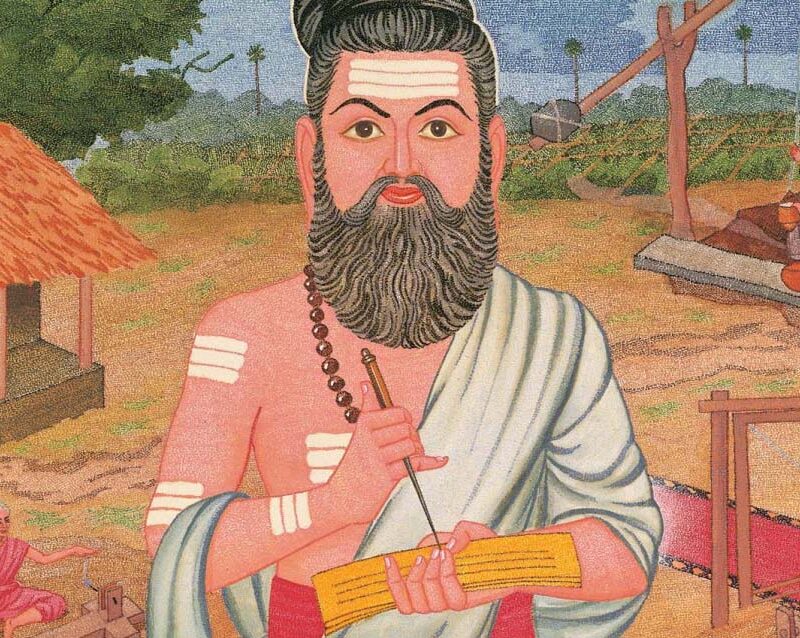
In the 1960s, when a stream of swamis and spiritual teachers from India entered the United States, propounding a multitude of philosophical ideas that took hold among many in a baby boomer generation looking for spiritual alternatives to what their parent’s generation had passed down to them, the seeds of Hindu thought were indelibly planted into the soil of American culture.
As these seeds have blossomed into hundreds of temples, a multi-billion dollar yoga industry, and even mainstream movies and TV shows, Hindu terminology has become increasingly common in everyday life for many. But since most Hindu texts are written in Sanskrit, a classical Indian language that is highly complex and does not always translate phonetically, many of these words have been grossly mispronounced in the Western world. Because Hinduism places such a strong emphasis on the power of sound, as sound vibration is proven to significantly impact a person’s physical, emotional, and mental state, it’s worth taking the time to learn to pronounce Sanskrit terms properly, so that you can experience the full potency of them.
So, here are some of the most commonly mispronounced Sanskrit words, and how to pronounce them accurately.
Chakra: Though chakra is sometimes spelled with a single “c” as chakra, it is always pronounced as cha.
Shanti: Though shanti is sometimes spelled with a single “s” as shanti, it is always pronounced as sha.
Bhakti: The “b” in bhakti is pronounced with an aspirate bha sound, which is actually assigned its own letter in the Sanskrit alphabet, as separate from the b sound heard in “back.”
Shavasana: Like shanti, shavasana is also sometimes spelled with a single “s,” even though it is always pronounced as sha.
1) Chakra
Often mispronounced as shakra, with the sh sound heard in words like “shoe” and “ship,” the first syllable in chakra is actually pronounced cha, with the ch sound heard in words like “patch” and “munch,” while the “a” in both syllables is pronounced with the uh sound in “duh.” Thus, the correct pronunciation is chuh-kruh.
Meaning “wheel” in Sanskrit, the term chakra generally refers to seven major discs of subtle energy that run along the center of the body. According to yogic texts, each chakra is related to a part of the body, and affects certain aspects of a person’s life — be it creativity, intuition, self-confidence, etc. To be physically, mentally, and emotionally healthy, energy must be able to flow freely between chakras. These chakras, however, can be blocked by stress, lack of exercise, a poor diet, or an excess of negative thoughts. When this happens, the free movement of one’s energy is obstructed and physical, emotional, and mental issues can arise. Yogic postures and breath exercises, therefore, are recommended to help unblock chakras, thereby bringing balance to one’s overall well-being.
2) Namaste
Often mispronounced as nah-mah-stay, the first syllable in namaste is actually pronounced with the num sound heard in “number,” while the second syllable is pronounced with the uh sound heard in “duh.” Keep the last syllable as stay (though the “t” is soft, with the tongue hitting the back of the teeth rather than the front of the palate), and the correct pronunciation becomes num-uh-stay.
From the Sanskrit words namah (bow) and te (to you), namaste translates literally as “I bow to you” — the “you” referring to the Divine within each person. A signal of honor, respect, and gratitude, the greeting is often complemented by a prayer-like gesture called pranamasana (pranam meaning “to pay respect” and asana meaning “pose”), in which the palms are placed together in front of the heart. Be it family members, friends, or even strangers, namaste can be used with anyone, as everyone has the Divine within, and should therefore be treated with respect and honor.
3) Shanti
Often mispronounced as shan-tee, with the a sound heard in words like “sand” and “land,” the first syllable in shanti is actually pronounced with the a sound heard in “father,” and the “t” is the same soft t sound in namaste. Thus, the correct pronunciation is shaan-thi.
A Sanskrit term meaning “peace,” shanti is often chanted before and/or after a yoga practice in the mantra om, shanti, shanti, shanti, as an invocation of tranquility for the mind, body, and spirit, as well as within, around, and between us. Like namaste, om shanti can also be used as a type of greeting, which means “peace be with you.”
4) Hatha
Often mispronounced as haa-thuh, with the ha sound heard in “hat,” and the thuh sound heard in “thunder,” the first syllable in hatha is actually pronounced with the uh sound in “duh,” while the second syllable is pronounced with an aspirated “h,” resulting in the tuh sound heard in “touch.” Thus, the correct pronunciation is huh-tuh.
A Sanskrit term meaning “force” or “effort,” hatha is a physical form of yoga that traditionally begins by working on physical poses, before also incorporating more subtle practices, like breath work, in order to develop better mental focus for the purpose of connecting to the Divine.
5) Bhakti
Often mispronounced as baak-tee, with the a sound heard in “back,” bhakti is actually pronounced with the uh sound in “duh,” and the same soft t sound in namaste and shanti. Thus, the correct pronunciation is bhuk-thi.
A Sanskrit term meaning “devotion,” or “attachment,” bhakti is known as the yoga of devotion, and is among the four major types of yoga discussed in the Bhagavad Gita — one of Hinduism’s most revered sacred texts — by which one can connect to the Divine.
6) Shavasana
Often mispronounced as she-vasana, with the she sound heard in “shiva,” the first syllable of shavasana is actually pronounced with the uh sound heard in “duh.” Thus, the correct pronunciation is shuh-vaas-uhna.
From the Sanskrit words shava (corpse) and asana (pose), shavasana is a restorative pose commonly performed after a yoga practice, where you lie down on your back and fully relax the mind and body. Though it can be easily mistaken as a chance to drift into a short nap, shavasana is meant to be an active state, in which you take the time to calm the body and mind as you assimilate the results of the previous postures.








































